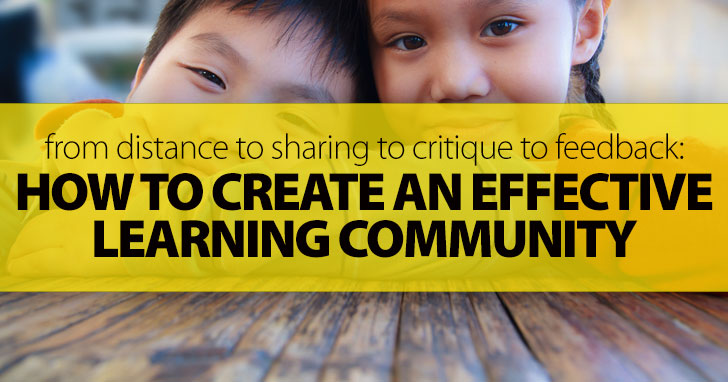Teacher, I Need to Talk to You Now: Acclimating the Very Novice Student to Classroom Manners


From many years of experience as an instructor in diverse classrooms, I can attest to this: there is nothing quite as energizing as the flow of ideas, sometimes heated, that comes out of a classroom among people of varying levels of maturity, cultural backgrounds, and socioeconomic status. However, that is not to say that these classrooms are without disadvantages.
An inherent concern in the diverse classroom is initial student alienation from each other. What, after all, does the eighteen-year-old female freshman have in common with the male veteran in his thirties readjusting to being a civilian? Or to the student with gang/criminal history trying to straighten out his life? To the young immigrant student longing to break free from the confines of his parents’ boundaries? How does the instructor create a community of students of such varied background and goals? It is a challenge, but it can be done.

Group activities should be incorporated from the first day, in learning about the class together. On the first day, have students work in groups to come up with three to five critical questions they have about the class; they can then read the syllabus to find the answers or ask the instructor. Further ice breaking activities related to the course content or college life can be incorporated in the early days of the class in surveys to find out peers’ college majors, for example, or past experiences related to the course content. For example, as the first writing assignment, I had students write their “literacy biography,” in which they discussed their own experiences with reading and writing. All students were reflective on the topic, and in this way they also got to learn each other’s backgrounds--if they had second language/cultural experience, for example, or if they shared the same interests in reading material.
Instructors must model the behavior they wish to see in students: in this case, authentic concern for each student and her experiences. If the instructor treats each student as if her contributions to the class discussion are valuable--and invariably they are--then the other students will act accordingly and take an interest beyond the students of similar background that they might normally gravitate to. For example, a number of students had unexpected opinions on the topics of our criminal justice system and treatment of drug offenders--unexpected and perhaps unacceptable, in a traditional college setting. But by modeling listening to their opinions on the topic, even if they weren’t entirely socially acceptable--e.g., opinions on the criminal justice system, drawn from personal experience of involvement with that system--respect for different viewpoints was modeled.
Discussion of course readings is one of the activities that can really get students exchanging ideas with each other. The discussions are based on core class readings, on topics such as language use and learning, from writers like Amy Tan and Richard Rodriquez, both of whom have written compellingly of their experiences in growing up in bilingual homes and of language learning. Language is of course a universal--everyone has experience with it, and it is through dialogue here that students can begin to exchange opinions and experiences. For example, many students have had the experience of suffering through foreign language classrooms with less than effective instruction (it is a source of constant amazement to me that California youth who may have taken Spanish from kindergarten onward leave high school without being able to communicate in the language at all.) Because students have this shared experience, and probably have reflected on it, they can discuss why the instruction was so ineffective and what might have improved it.
Once students are comfortable discussing more universal topics, they can begin discussing specific social issues that are still of general concern. For example, one of the course readings was written by a man serving a life sentence for an unpremeditated murder committed when he was a young man. He wrote compellingly about how the prison system, focused on punishment rather than rehabilitation, was ineffective in addressing crime--mostly committed by people such as himself: young males with poor impulse control who would not in their lives commit another crime. Because most students have some experience with crime--either as victim, or a relative of a perpetrator, sometimes themselves a perpetrator--all were concerned with the topic and had varied perspectives on it to share. Entering a dialogue with each other on a topic of importance deepened understanding of the topic and each other.
The dialogue can be further extended to online discussion threads, if your class has a companion website or “learning management system,” as many do today, such as Blackboard and Turnitin, websites set up specifically for classroom use and which can be modified by individual class need. I posted some of our topics on the discussion threads portion of the site, asking students to post once to the topic and to at least two peers’ responses. This got students more involved in the topic and deeper responses their peers were developed as students were more able to reflect than in a face-to-face discussion and did not have to worry about turn-taking as they did in class. In addition, introverted students who had trouble speaking up in class were drawn into the dialogue more. Most students went beyond the required participation because they became committed to the dialogue.
Once students have become acclimated to the academic dialogue, they are ready to develop the dialogue more through independent research and writing on a topic of individual interest. It is here that students are really drawn into what it is to be a college student. Some students chose to write about topics we had been discussing, such as gun control, but others chose to research a topic of interest to themselves--cleared by me, the instructor, for appropriateness (they invariably were.) One young man, a returning student, researched the value of the four-year, liberal arts degree, focusing on the drawbacks (expense, time, lack of focus on student need and interest, all leading to a high attrition rate). This research generated a great deal of interest from his peers and led to students considering focusing their college goals early and learning ways to limit expense. In addition to generating interest in other students, students who posted their writing received feedback on ways to improve their work from their peers--critique they were receptive to as they now knew and were comfortable with each other.
Are there some concerns in students sharing diverse opinions? Of course. A major one is the concern of conversations getting overheated, which quieter students in particular may find uncomfortable. Usually a reminder from the instructor to respect each other in exchanging opinions is all that is needed. In addition, a problem I encountered last semester was groups “solidifying” early, with students working over and over again with the same peers--usually those they happened to be seated near. In teaching the class again, I would make sure that students changed the groups every day.
There are challenges as well as benefits to working in a diverse classroom. However, with teacher planning and effort, students can move beyond initial discomfort to sharing their experiences enough to feel comfortable in the dialogue with each other and critique of their each other’s work that make an effective learning community.